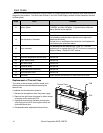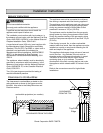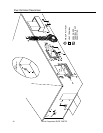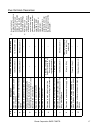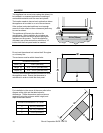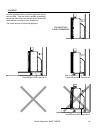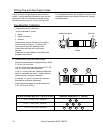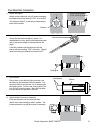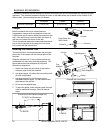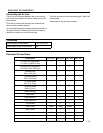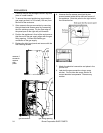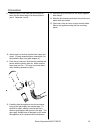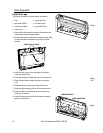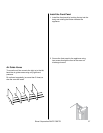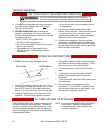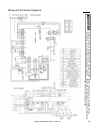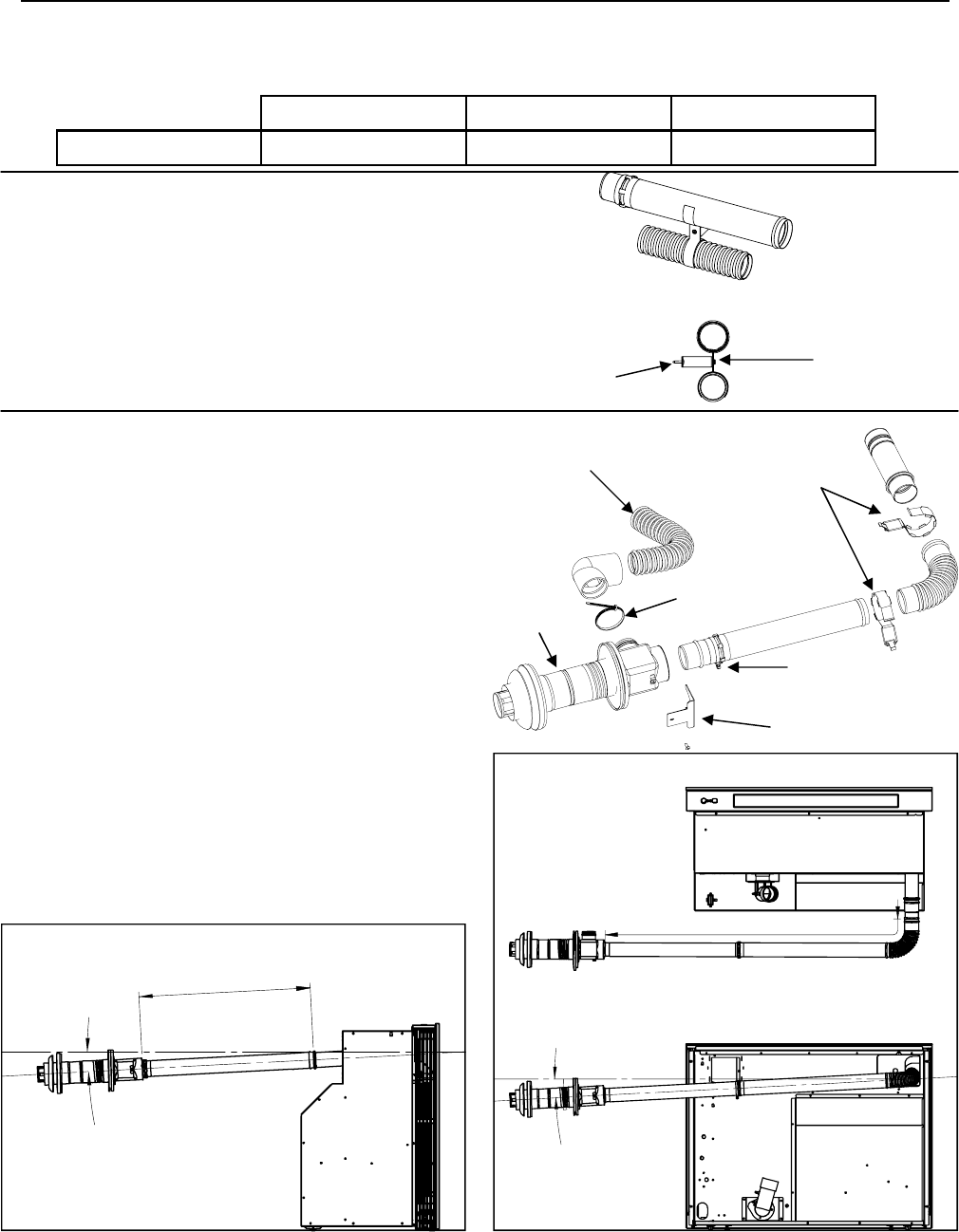
22 Rinnai Corporation RHFE-750ETR
Extension Kit Installation
The exhaust line is connected between the joint pipe
at the rear of the heater and the exhaust port on the
flue pipe.
Slope the exhaust line 3° to the outside so that any
condensate will drain away from the appliance. The
figures below show two examples of horizontal
exhaust line extensions.
Example with One Elbow
Example with No Elbows (straight out)
Installing the Exhaust Line
1. Attach the clamp with one screw to secure the
extension pipe to the flue manifold.
2. Use pipe stopper A to clamp the connections with
all other components.
3. Use pipe stopper B to fix the length on the
adjustable exhaust pipes. Do not extend these
pipes beyond the red line.
4. Do not cut the exhaust pipe.
5. To bend the elbow, insert exhaust pipes into both
ends for additional leverage. Bend to desired
angle.
Both the exhaust line and air intake hose are
supported by clamps which are attached to the wall.
A wall fixture can be used to offset the clamp from the
wall. If the wall fixture is not used then use Screw A
and the nut to attach the clamp to the wall.
The air line should always be underneath the exhaust
line so that in case the air line sags it will not come
into contact with the exhaust line.
Clamps
Exhaust Line
Air Line
Pipe Clamp and
Wall Fixture
Screw B
Screw A
3° SLOPE
6.5 ft (2m) Maximum
If necessary, extension kits are available to extend the exhaust line and air line between the manifold and the
appliance. The maximum extension allowed is shown in the table below and is based on the number of 90°
elbows used. Vertical extensions are not allowed.
Pipe Stopper A
Clamp
Flue
Manifold
Air Line
Pipe Stopper B
Tie
no elbows 1 elbow 2 elbows
maximum vent length 7.2 ft (2.2 m) 6.5 ft (2.0 m) 5.9 ft (1.8 m)
7.2 ft(2.2 m) Ma
x
imum
3° SLOPE



